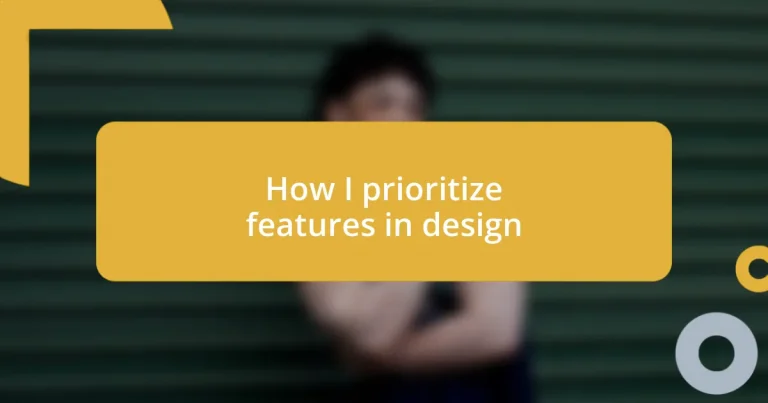Key takeaways:
- Feature prioritization involves balancing user feedback and business goals to deliver real user value.
- Utilizing structured feedback processes and collaboration fosters a more user-centric product development.
- Applying prioritization frameworks and maintaining open communication within cross-functional teams enhances decision-making and project clarity.
- Iteration driven by user feedback is crucial for refining designs and improving long-term user satisfaction.
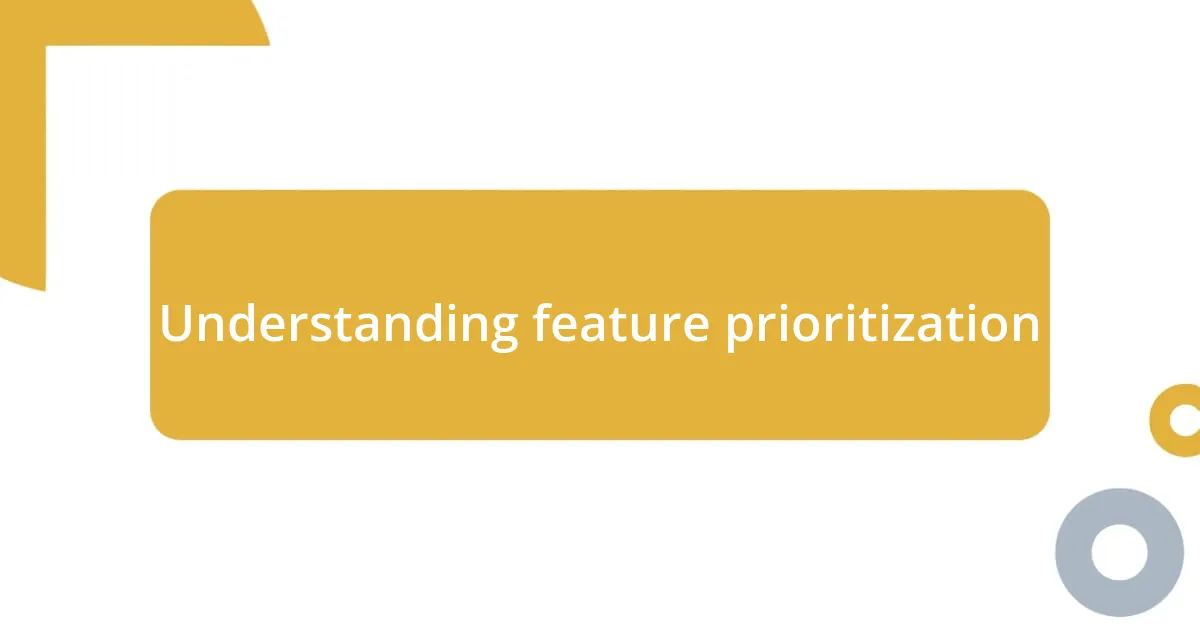
Understanding feature prioritization
Feature prioritization is an essential step in the design process that helps organize and focus efforts on what truly matters. I remember a time when I was overwhelmed by a long list of features for an app. It forced me to ask myself, “What will really make a difference for our users?” This kind of introspection is vital for prioritization.
When considering which features to prioritize, I find it helpful to weigh user feedback against business goals. I once gathered user insights through surveys and realized that a simple, yet frequently requested feature would significantly enhance user satisfaction. It made me wonder: how often do we overlook straightforward solutions in pursuit of more complex ideas?
Another crucial aspect of understanding feature prioritization is recognizing the constraints of time and resources. In one of my projects, I had to make tough decisions and choose between a flashy new feature and a much-needed improvement to existing functionality. This experience taught me that balancing innovation with practicality is key. After all, feature prioritization isn’t just about what’s exciting; it’s about delivering real value to users.
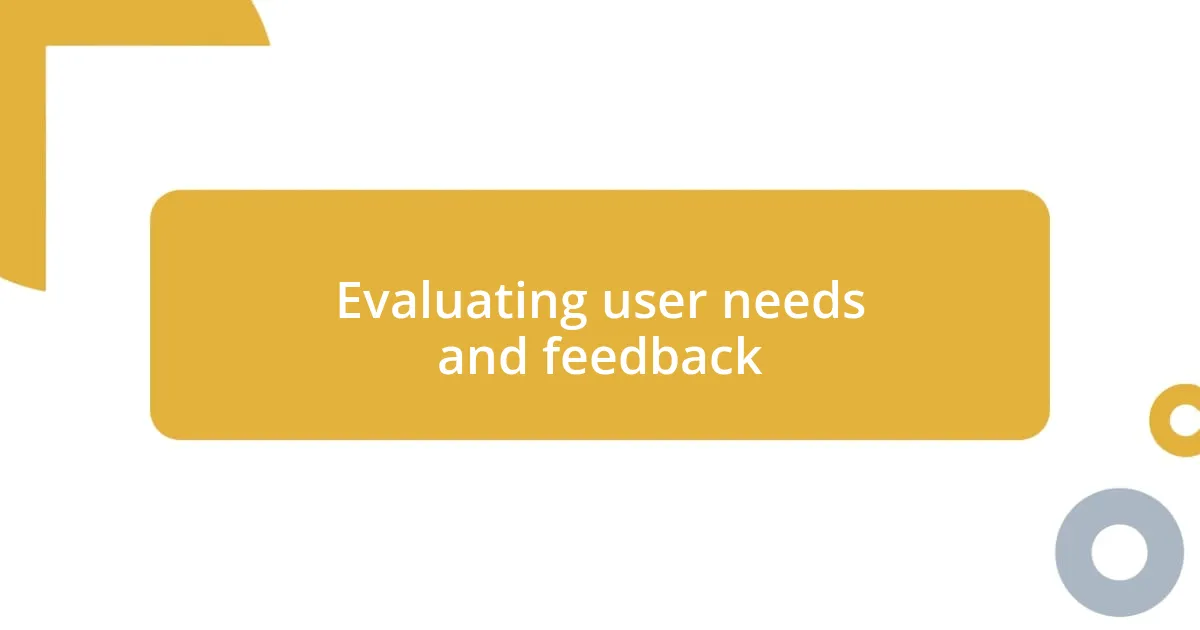
Evaluating user needs and feedback
Evaluating user needs and feedback is like tuning a musical instrument; it requires listening carefully to find the right pitch. I vividly recall a project where user interviews led to unexpected insights. One user mentioned a frustrating experience that I had never considered, which made me rethink our approach entirely. By diving deep into user narratives, I was able to understand not just their needs but their emotions connected to using the product.
In my experience, analyzing patterns in feedback can reveal unexpected priorities. For instance, when we collected data from customer support tickets, I stumbled upon a recurring theme that pointed to an underperforming feature. It was a real eye-opener, proving that users often provide feedback that can guide feature development if we pay close attention. Are we really listening to what our users are telling us, or are we just hearing noise?
Lastly, implementing structured feedback processes, like usability tests or beta releases, can yield rich data for evaluation. I remember a beta testing phase where users engaged with features in ways we hadn’t anticipated. The feedback we gathered allowed us to pivot quickly, fostering a more user-centric product. This experience reinforced the idea that ongoing feedback isn’t a one-time effort; it’s a continuous loop that shapes our design journey.
| User Needs Evaluation | Feedback Importance |
|---|---|
| In-depth interviews reveal nuanced user emotions | Regular feedback helps identify missing features |
| Analyzing support tickets uncovers hidden pain points | Structured testing can lead to actionable insights |
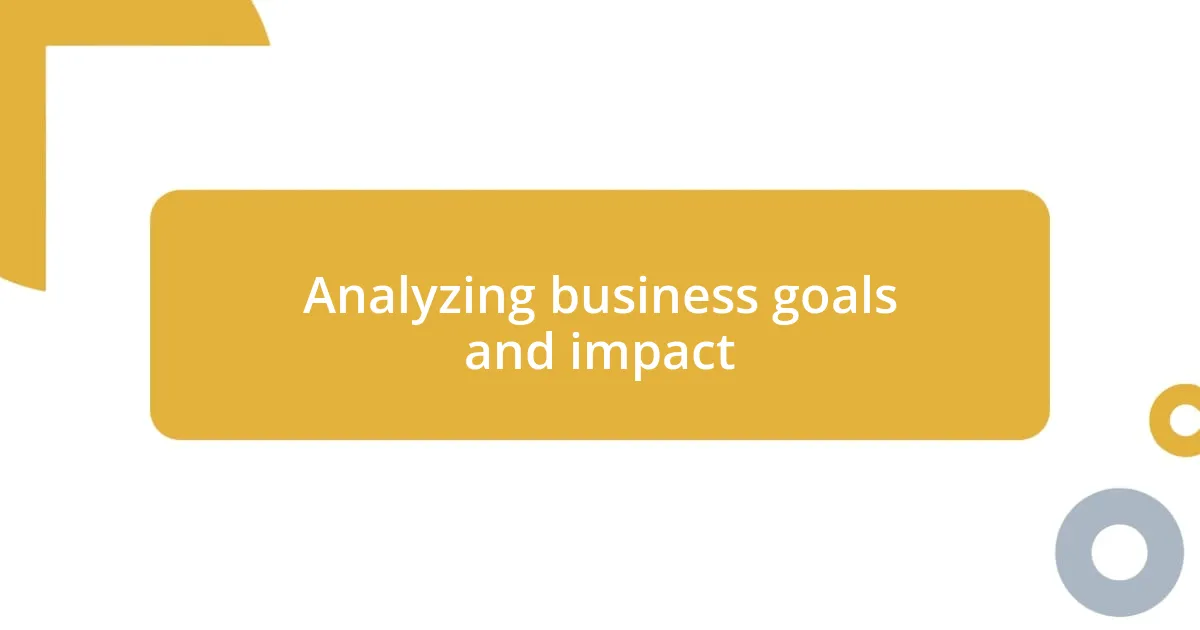
Analyzing business goals and impact
When I sit down to analyze business goals, it often feels like aligning stars—each goal representing a critical point in the cosmos of the business. During one key project, the team and I identified our primary objective: increasing user retention. I remember a brainstorming session where we mapped features back to this goal. It brought me a sense of clarity because every feature we discussed had to contribute to that overarching aim. It became clear that without understanding the business impact, prioritizing features would be like sailing without a compass.
To truly grasp how features align with business goals, I recommend focusing on:
-
Measurable Metrics: What key performance indicators (KPIs) does the business prioritize? Are we looking at user acquisition, retention, or engagement?
-
Stakeholder Input: Regular discussions with stakeholders can uncover hidden priorities that feature development must support.
-
Competitive Analysis: Understanding competitors’ strengths and weaknesses can help inform which features will provide a competitive edge.
-
Return on Investment (ROI): Evaluating potential features through an ROI lens offers insights into where resources will be best spent.
In my own experience, this multi-faceted analysis led to the realization that a minor tweak in our app would directly enhance ongoing user engagement. By weaving together business goals with feature impact, we created a roadmap that genuinely reflected what was important—not just for our users, but for our company’s success too.
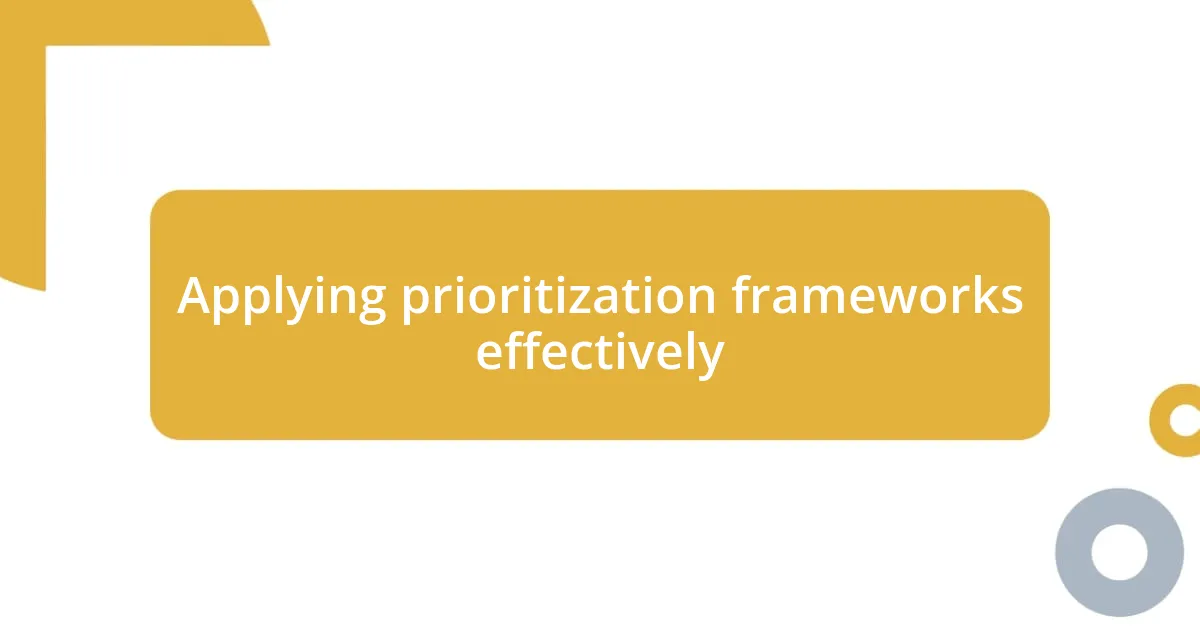
Applying prioritization frameworks effectively
Applying prioritization frameworks effectively is all about finding the right balance between user needs and business objectives. I once faced a critical decision on which feature to roll out first. The team was split, and it was through the MoSCoW method (which stands for Must have, Should have, Could have, and Won’t have this time) that we gained clarity. By categorizing features, the group felt a sense of relief as we aligned our priorities based on the urgency and user impact of each option.
Then there was a time I applied the RICE scoring model—standing for Reach, Impact, Confidence, and Effort. I remember creating a shared spreadsheet where the team could input their scores. Watching everyone participate gave me a warm sense of collaboration. It made me realize that seeing different perspectives on importance not only opened our eyes to possibilities but also fostered ownership in the decision-making process. Wouldn’t you agree that including everyone in prioritization leads to greater buy-in and motivation?
Lastly, I can’t stress enough the importance of simplicity. During a particularly complex project, we tried using multiple frameworks at once, and it became overwhelming. I learned to prioritize features with a straightforward framework, which allowed us to iterate quickly and respond to changing user needs. It reminded me that while frameworks are helpful, they should serve to enhance our understanding, not complicate it. How do you perceive the role of simplicity when applying prioritization frameworks in your projects? Balancing clarity and depth can truly make or break the prioritization process.
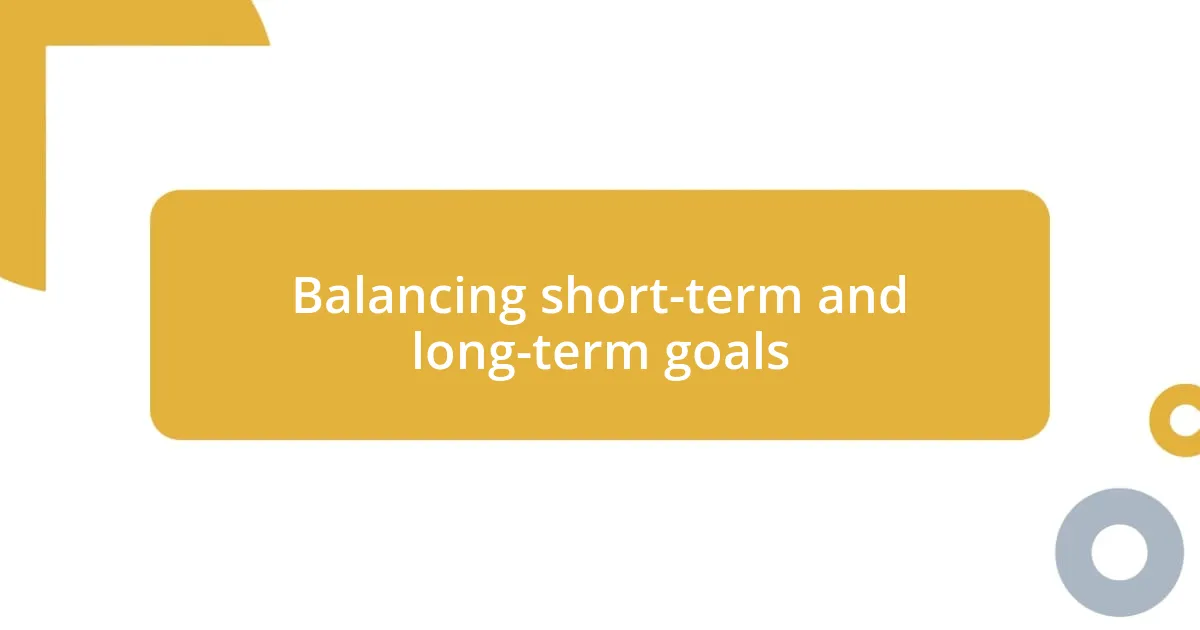
Balancing short-term and long-term goals
Finding the right equilibrium between short-term and long-term goals is crucial in the design process. I recall a project where we were under pressure to deliver quick gains—perhaps it was a new feature that would spike user engagement overnight. However, I sensed an underlying risk. I brought this concern to the team, highlighting that if we only chased instant results, we might overlook features that could solidify our platform’s long-term success. Do we really want to trade quick wins for lasting value?
In another instance, I led a discussion on prioritizing features for an upcoming release. Some team members were eager for flashy, quick-to-market options, while others argued for foundational improvements that would pay off later. I encouraged an open dialogue about the potential trade-offs. It was enlightening to see how diverse perspectives on urgency and impact shifted our focus toward a balanced roadmap—one that combined immediate needs with our vision for the future. It left me wondering, how often do we allow short-term pressures to overshadow our broader ambitions?
Ultimately, I’ve learned that balancing these goals isn’t about strict dichotomies; it’s more like a dance where timing is everything. I remember adjusting our timeline after a critical stakeholder meeting, which revealed the need for a more robust back-end feature. This shift proved challenging initially, but it was incredibly gratifying to witness how it led to a more resilient product that users genuinely appreciated. Isn’t it fascinating how sometimes slowing down can actually lead to faster progress?
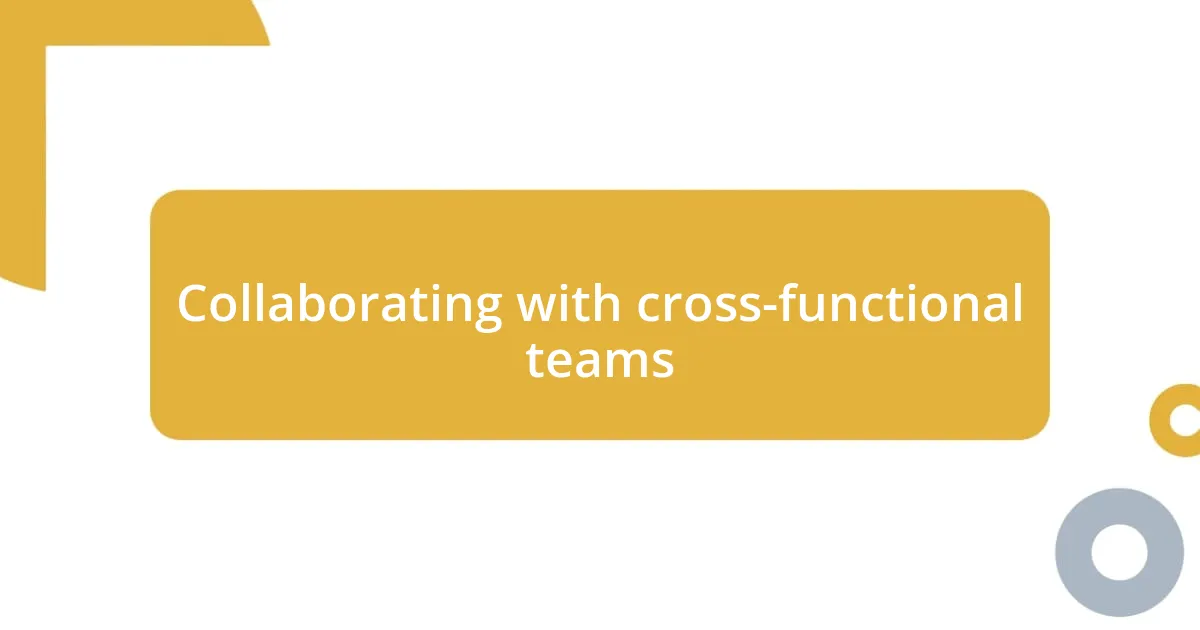
Collaborating with cross-functional teams
When collaborating with cross-functional teams, I’ve found that establishing open communication channels is paramount. In one project, I spearheaded weekly check-ins with designers, developers, and product managers. These meetings became a space where ideas bounced around freely, and I could feel the energy as everyone’s expertise blended, creating a sense of camaraderie. Isn’t it incredible how a simple conversation can spark innovative solutions we might not have reached alone?
It’s also vital to respect the different perspectives that each team member brings. I remember a time when our developer team expressed concerns about the feasibility of a proposed feature. Their insights prompted me to adjust our priorities accordingly, emphasizing the necessity of balancing design desires with technical realities. By embracing that feedback, we cultivated a culture of trust. I can’t help but think—how often do we overlook team insights that could truly enrich our projects?
Lastly, leveraging collaborative tools has been a game changer for me. During the design of a new mobile app, we used a shared digital board for feature prioritization. Each team member could see and interact with the same information, which made discussions about priorities so much more engaging. I distinctly recall the moment someone shifted a feature’s priority based on newfound understanding from data shared in real time. It was a delightful reminder that collaboration not only helps define our goals but also weaves a shared narrative that drives us forward together. How do you harness tools to foster collaboration in your projects?
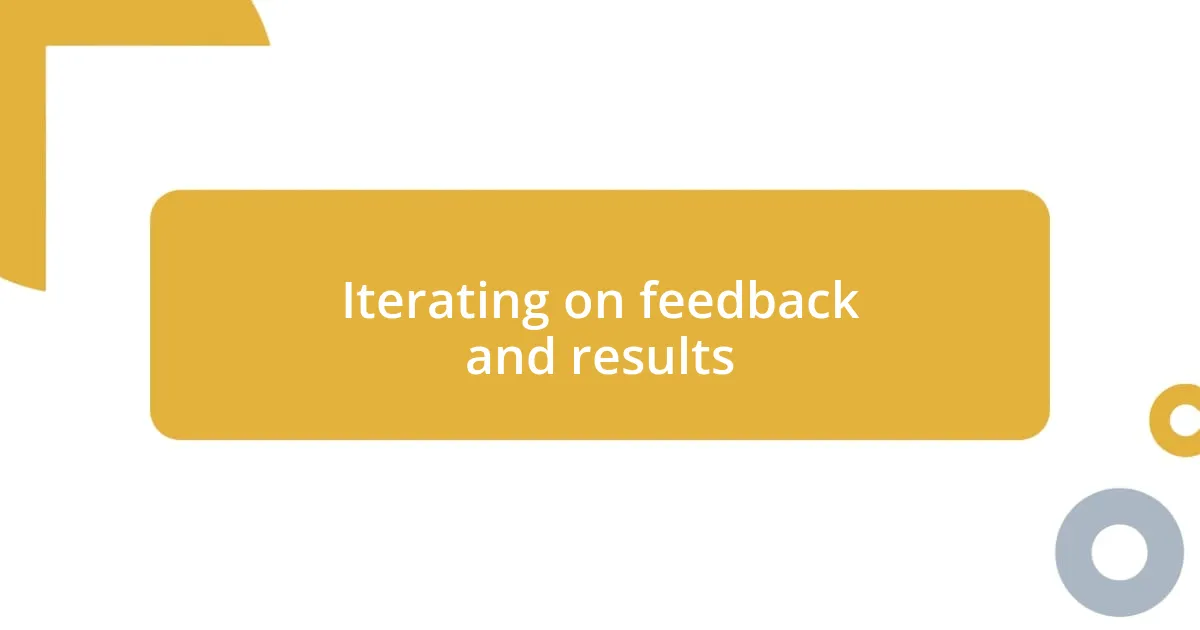
Iterating on feedback and results
Iteration is an essential part of refining any design, and I’ve come to cherish the role feedback plays in that journey. In one project, after launching a new feature, we conducted user testing and gathered real-time reactions. I was surprised at how users interacted differently than we expected. Their feedback prompted me to rethink our design choices, leading to adjustments that not only improved usability but also deepened our understanding of user needs. Have you ever experienced that moment when feedback reshapes your thinking?
I also believe in celebrating small wins brought about by iterative changes. There was a time when user analytics revealed a drop-off point in one of our onboarding flows. Armed with this data, we made targeted tweaks, and the subsequent uptick in user retention was profoundly rewarding. It was a vivid reminder that a small iteration can lead to significant results over time. Why is it that we sometimes undervalue these incremental improvements?
Finally, I’ve learned that documenting feedback and results is invaluable. After we implemented changes based on user input, I’d often sit down with our team to reflect on the outcomes. Sharing those insights not only acknowledged everyone’s contributions but also fostered a culture where learning was prioritized. It led us to ask, how can we continue to evolve if we don’t take the time to understand our progress? Iteration isn’t just a process; it’s a mindset that I truly cherish in my design work.












